
Motion control and electronic systems manufacturer Helios Technologies (NYSE: HLIO) announced better-than-expected revenue in Q3 CY2025, with sales up 13.3% year on year to $220.3 million. Revenue guidance for the full year exceeded analysts’ estimates, but next quarter’s guidance of $197 million was less impressive, coming in 2.1% below expectations. Its non-GAAP profit of $0.72 per share was 9.8% above analysts’ consensus estimates.
Is now the time to buy Helios? Find out by accessing our full research report, it’s free for active Edge members.
Helios (HLIO) Q3 CY2025 Highlights:
- Revenue: $220.3 million vs analyst estimates of $212.5 million (13.3% year-on-year growth, 3.7% beat)
- Adjusted EPS: $0.72 vs analyst estimates of $0.66 (9.8% beat)
- Adjusted EBITDA: $45.1 million vs analyst estimates of $42.36 million (20.5% margin, 6.5% beat)
- Revenue Guidance for Q4 CY2025 is $197 million at the midpoint, below analyst estimates of $201.2 million
- Management raised its full-year Adjusted EPS guidance to $2.47 at the midpoint, a 2.7% increase
- Operating Margin: 0.6%, down from 11.4% in the same quarter last year
- Free Cash Flow Margin: 8.4%, down from 14.8% in the same quarter last year
- Organic Revenue rose 12% year on year vs analyst estimates of 7.5% growth (454.1 basis point beat)
- Market Capitalization: $1.84 billion
“Our improved results in the third quarter are a testament to the Helios team's successful execution of our strategy to create a higher performing business. We had stronger-than-expected sales, continued to improve our margins, and demonstrated financial discipline by strengthening our balance sheet and reducing our cash conversion cycle. We will also have a more meaningful reduction in our debt to end 2025 having monetized our CFP asset,” said Sean Bagan, President and Chief Executive Officer of Helios.
Company Overview
Founded on the principle of treating others as one wants to be treated, Helios (NYSE: HLIO) designs, manufactures, and sells motion and electronic control components for various sectors.
Revenue Growth
A company’s long-term sales performance is one signal of its overall quality. Even a bad business can shine for one or two quarters, but a top-tier one grows for years. Luckily, Helios’s sales grew at a solid 10.2% compounded annual growth rate over the last five years. Its growth beat the average industrials company and shows its offerings resonate with customers.
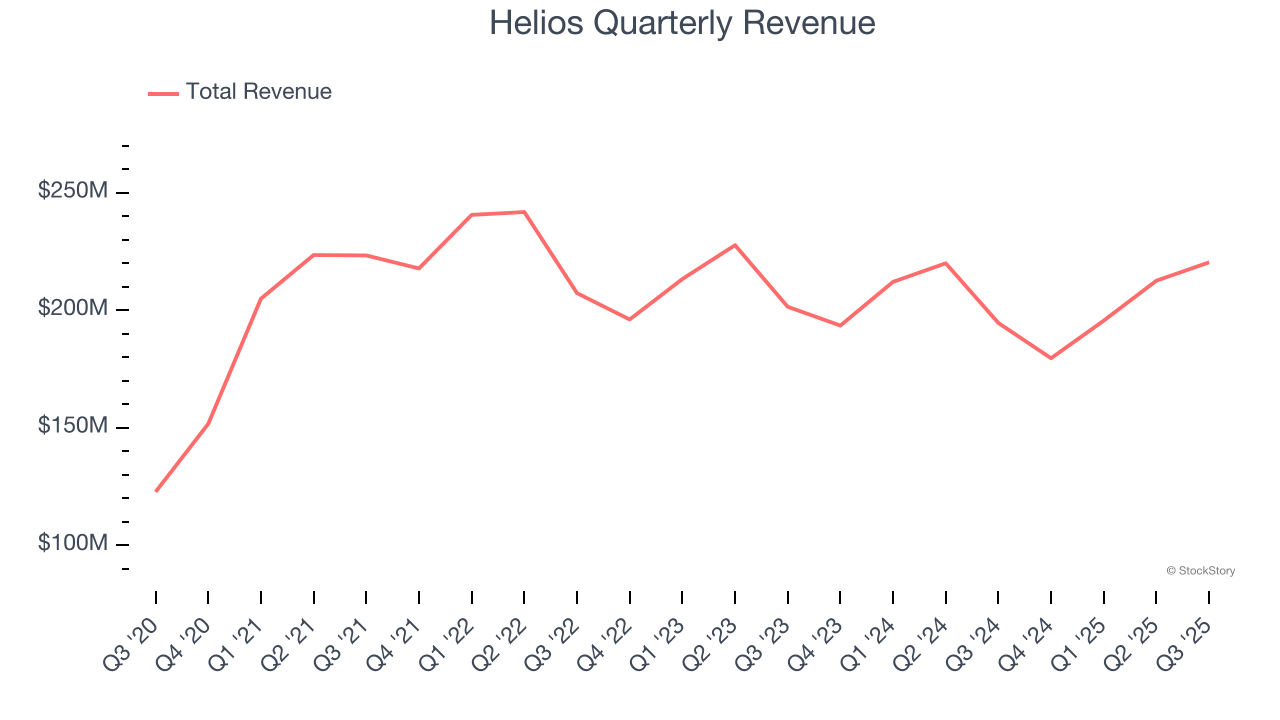
Long-term growth is the most important, but within industrials, a half-decade historical view may miss new industry trends or demand cycles. Helios’s recent performance marks a sharp pivot from its five-year trend as its revenue has shown annualized declines of 1.8% over the last two years. 
We can better understand the company’s sales dynamics by analyzing its organic revenue, which strips out one-time events like acquisitions and currency fluctuations that don’t accurately reflect its fundamentals. Over the last two years, Helios’s organic revenue averaged 2.8% year-on-year declines. Because this number aligns with its two-year revenue growth, we can see the company’s core operations (not acquisitions and divestitures) drove most of its results. 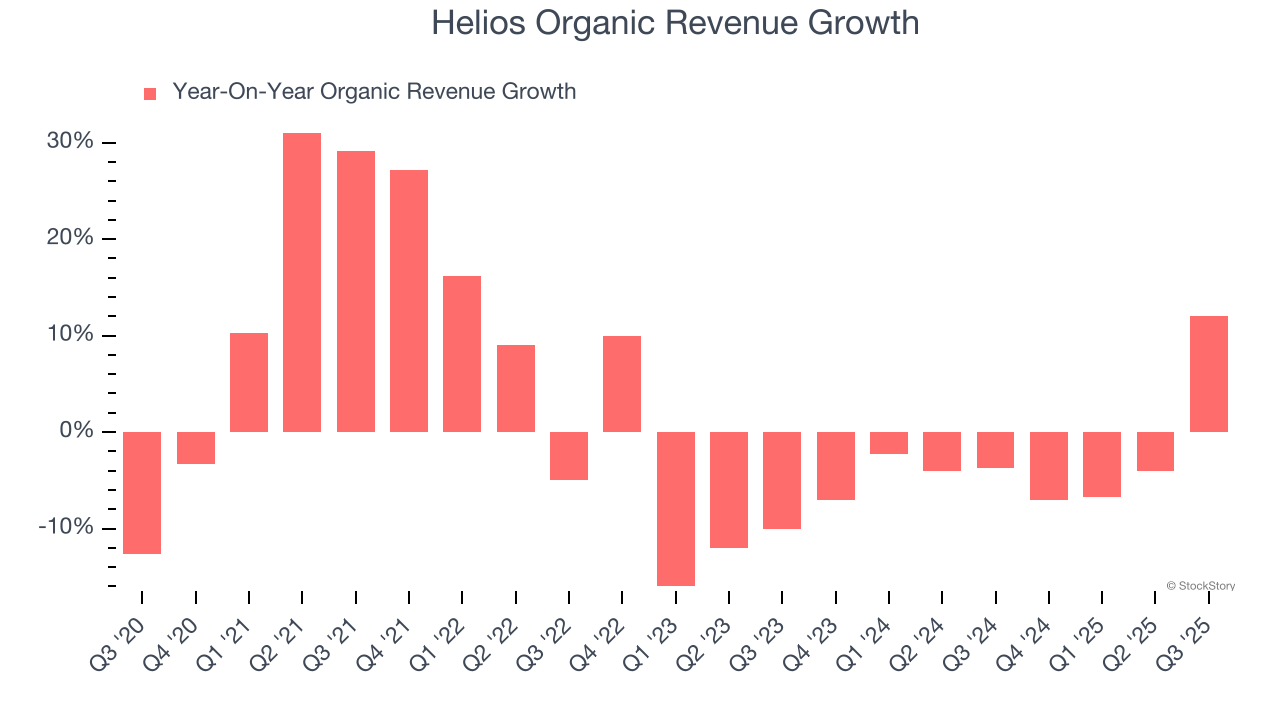
This quarter, Helios reported year-on-year revenue growth of 13.3%, and its $220.3 million of revenue exceeded Wall Street’s estimates by 3.7%. Company management is currently guiding for a 9.7% year-on-year increase in sales next quarter.
Looking further ahead, sell-side analysts expect revenue to remain flat over the next 12 months. Although this projection indicates its newer products and services will fuel better top-line performance, it is still below the sector average.
While Wall Street chases Nvidia at all-time highs, an under-the-radar semiconductor supplier is dominating a critical AI component these giants can’t build without. Click here to access our free report one of our favorites growth stories.
Operating Margin
Helios has been an efficient company over the last five years. It was one of the more profitable businesses in the industrials sector, boasting an average operating margin of 11.9%. This result isn’t too surprising as its gross margin gives it a favorable starting point.
Looking at the trend in its profitability, Helios’s operating margin decreased by 9.3 percentage points over the last five years. This raises questions about the company’s expense base because its revenue growth should have given it leverage on its fixed costs, resulting in better economies of scale and profitability.
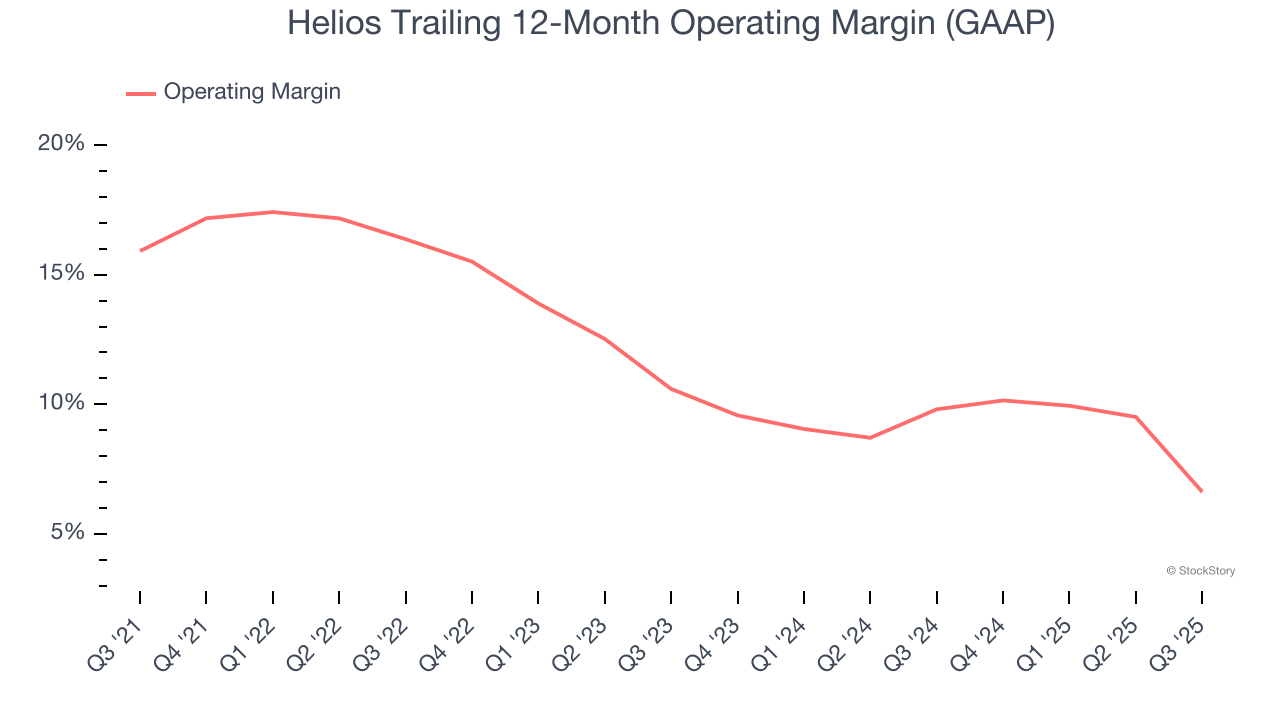
This quarter, Helios’s breakeven margin was down 10.8 percentage points year on year. Conversely, its revenue and gross margin actually rose, so we can assume it was less efficient because its operating expenses like marketing, R&D, and administrative overhead grew faster than its revenue.
Earnings Per Share
We track the long-term change in earnings per share (EPS) for the same reason as long-term revenue growth. Compared to revenue, however, EPS highlights whether a company’s growth is profitable.
Helios’s flat EPS over the last five years was below its 10.2% annualized revenue growth. This tells us the company became less profitable on a per-share basis as it expanded.
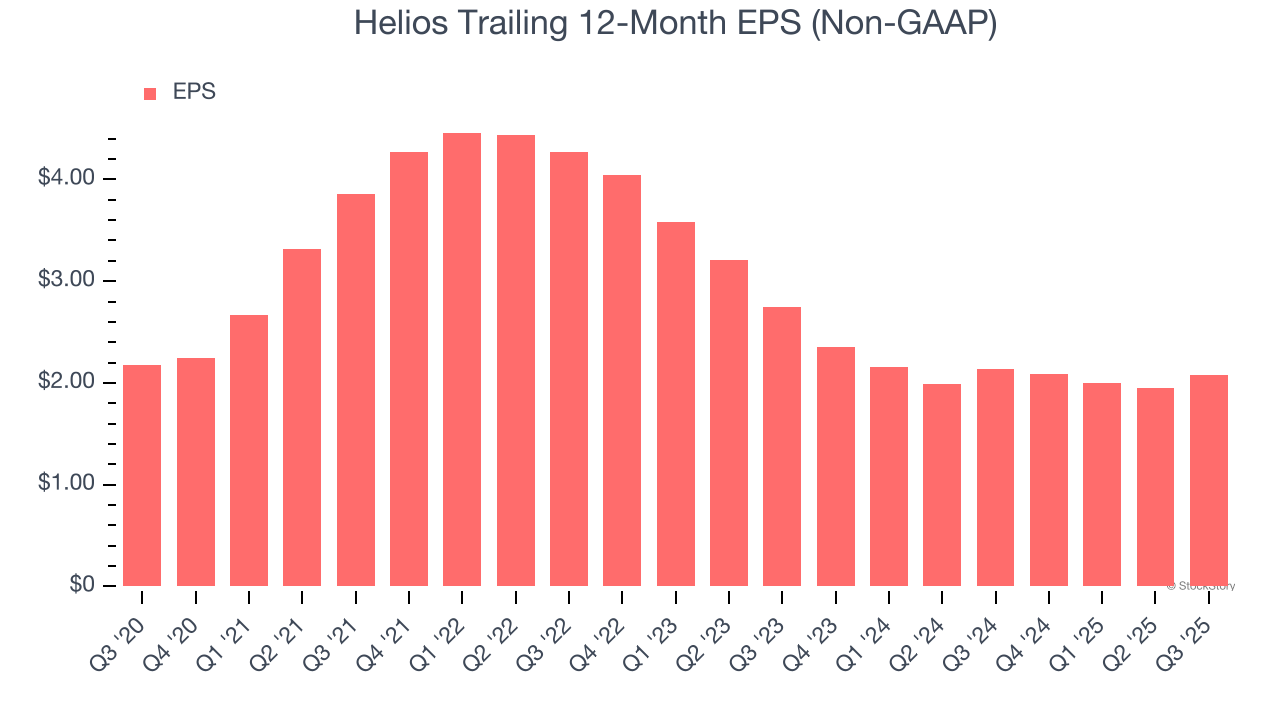
Diving into the nuances of Helios’s earnings can give us a better understanding of its performance. As we mentioned earlier, Helios’s operating margin declined by 9.3 percentage points over the last five years. Its share count also grew by 3.8%, meaning the company not only became less efficient with its operating expenses but also diluted its shareholders. 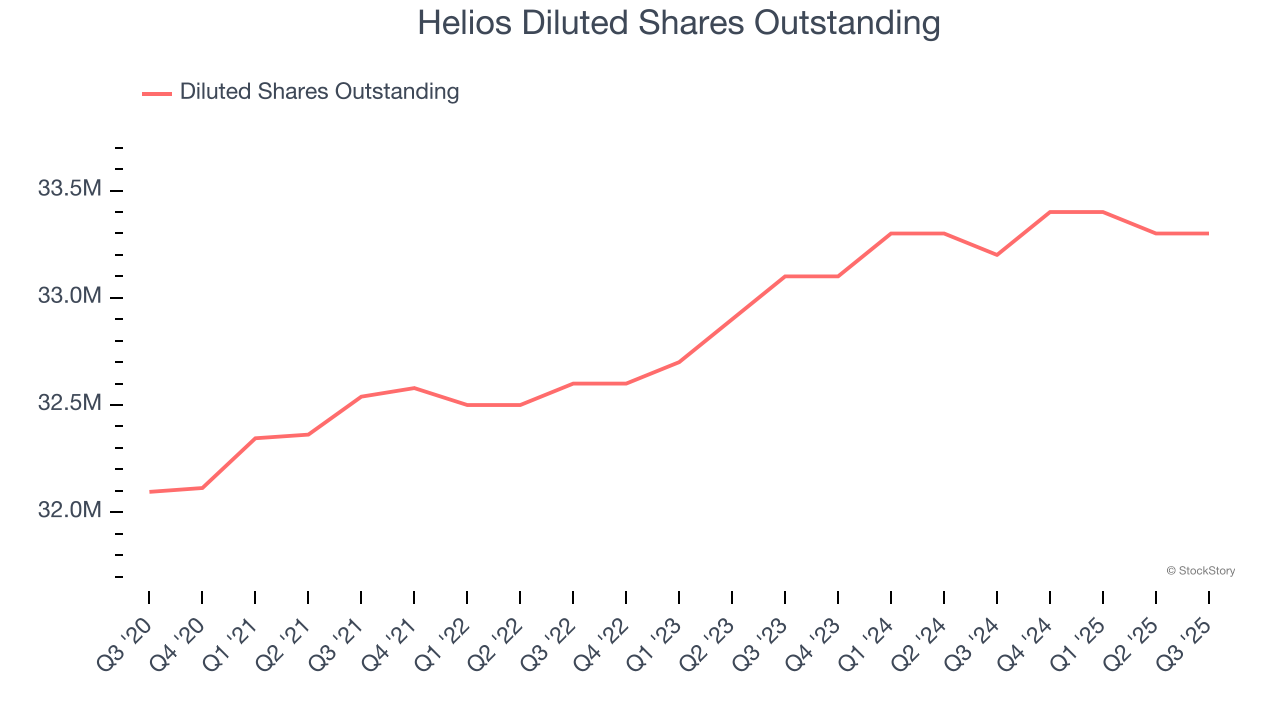
Like with revenue, we analyze EPS over a shorter period to see if we are missing a change in the business.
For Helios, its two-year annual EPS declines of 13% show its recent history was to blame for its underperformance over the last five years. These results were bad no matter how you slice the data.
In Q3, Helios reported adjusted EPS of $0.72, up from $0.59 in the same quarter last year. This print beat analysts’ estimates by 9.8%. Over the next 12 months, Wall Street expects Helios’s full-year EPS of $2.08 to grow 49.3%.
Key Takeaways from Helios’s Q3 Results
We were impressed by how significantly Helios blew past analysts’ organic revenue expectations this quarter. We were also excited its revenue outperformed Wall Street’s estimates by a wide margin. On the other hand, its EPS guidance for next quarter missed and its revenue guidance for next quarter fell short of Wall Street’s estimates. Overall, we think this was still a solid quarter with some key areas of upside. The stock traded up 1.4% to $57.43 immediately after reporting.
Helios had an encouraging quarter, but one earnings result doesn’t necessarily make the stock a buy. Let’s see if this is a good investment. If you’re making that decision, you should consider the bigger picture of valuation, business qualities, as well as the latest earnings. We cover that in our actionable full research report which you can read here, it’s free for active Edge members.







